I am sitting on a wooden seat in my favourite place in the Brisbane Ranges National Park, swinging my legs. The seat, designed and built by a former park ranger, has a sloping back, and with feet well off the ground, everyone who sits on it soaks up their surroundings, relaxes and soon finds their legs swinging. It’s a cool October morning and I’m enjoying the warm sun and the view. In front of me are knobbly grey and red rocks, with a scattering of pale green and grey circles of lichen. They are the top of a small cliff, below which are bare twisted branches, black and grey, a reminder of the intense bushfire that tore through here in January 2006.
Although it is over ten years ago, the dry rocky soil makes recovery difficult. Many gum trees resemble small bushes. Fresh green leaves highlight the tops of a few. The soil between them is still bare. The seat miraculously survived the fire, unsinged, although nearby trees are blackened. In the valley and on distant hillsides the effects of the fire are less obvious. Trees are still less dense than they were and tall black trunks stand out. On one, I see a white pair of cockatoos. Raucous calls alert me to two more Sulphur-crested Cockatoos flying overhead. A small dark bird of prey soars and dives over the valleys and hills. I hear quieter calls of many birds, chirps, chatterings and chimes, some sounding like musical conversations. A little bird with a grey back and an orange-brown breast lands, partly hidden, in a nearby tree, perhaps seeking insects.
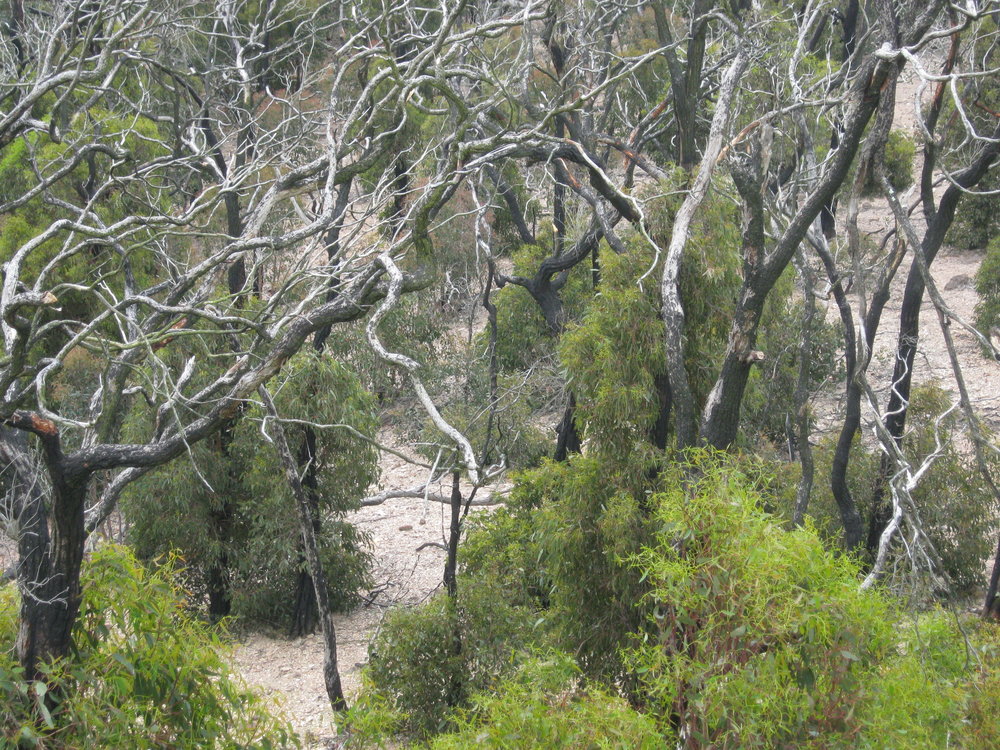
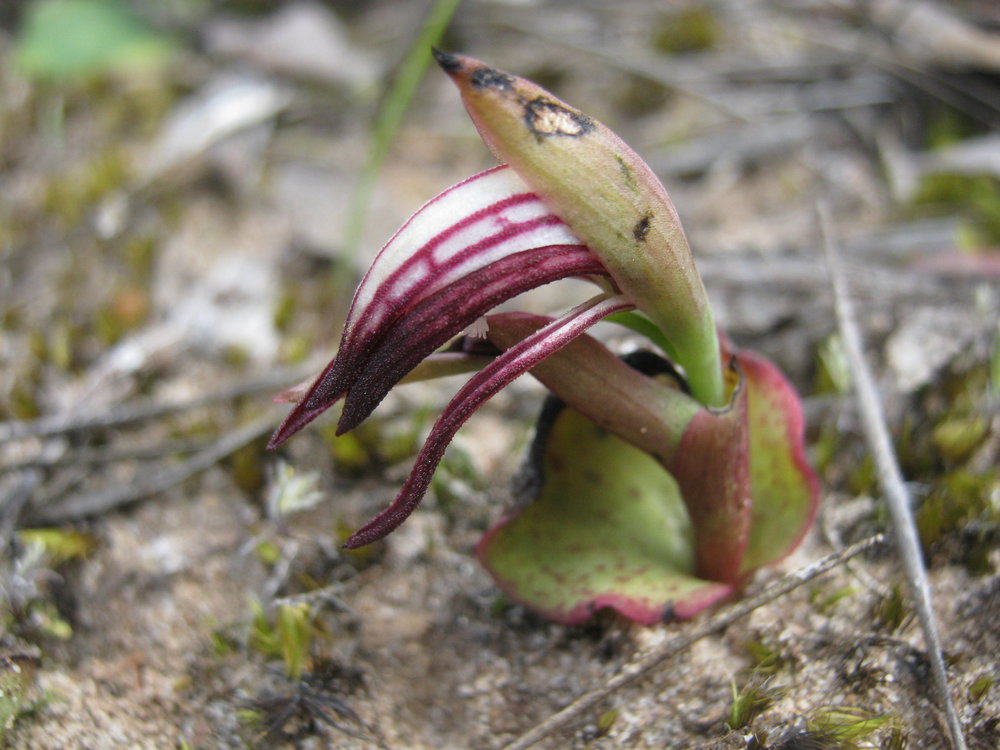
As I write, a small shiny dark brown beetle with reddish legs lands on my pen. The sunlight catches its wing cases, turning them dull green. It spends a couple of minutes exploring my pen, hand and paper, then flies away. On the red gravel, sand and rocks beneath my feet, little black ants work, heading out from their hole at the base of a rock, searching with pauses as they spread out from its central point, returning in haste with morsels of food for their nest. One pushes ahead of it a dull yellow wattle flower fallen from a bush growing up from below the cliff edge. The faded bloom is huge in comparison to the ant. It turns backwards and pulls it prize down into the hole. Nearby on the rocks, I see a larger ant, one of my favourites, also black apart from a golden abdomen glistening in the sun.

I think of the discoveries I made on my walk here. The bush is full of flowers, with species changing with the soil type. The most colourful area is through a heathland of poor soil. Among the eucalypts grow grass trees with long narrow leaves. The central leaves stand tall like a spiky haircut, surrounded by a long drooping fringe. Below this is a jacket of brown dried leaves, and for the older plants, a black trunk, straight or crooked, and perhaps branched to two or more shaggy heads. The smaller grass trees create a circle in the dirt around them, where the pointed leaves touching the ground are swayed by the wind. Around the grass trees are the flowers. Orange, yellow and red peas mix with white flowers of teatrees and everlasting daisies and curly red blooms of Brisbane Ranges Grevillea, found nowhere else in the world. Buds on long stalks sprouting from a circle of leaves promise lilies yet to come. A cluster of wattle bushes dangle green seed pods edged with red. Crane flies cling to grass blades with their long legs. Their narrow wings spreading outwards are transparent, patterned with brown veins.
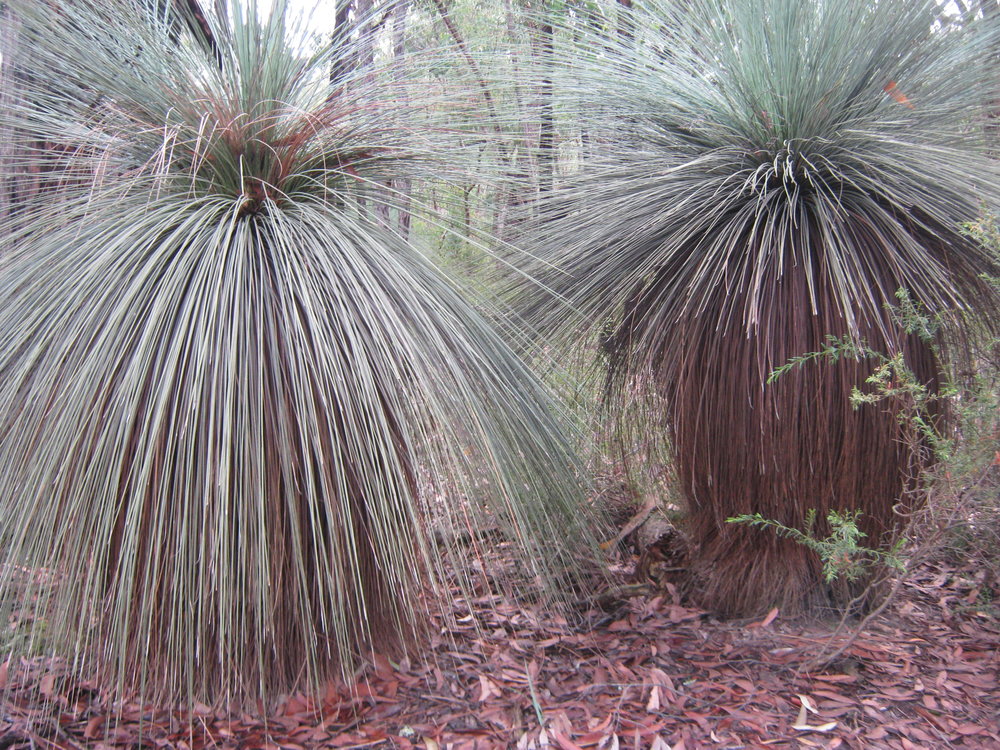
A wallaby and I startle each other. I watch as it hops away, quickly vanishing among the grass trees. I find a large wide feather, white and fluffy near its base, brown towards the end, with darker brown patterns across the middle. It lies on top of the leaf litter near the base of an old stringybark. A hollow is burnt into the tree’s base. Its top is broken off and its branches are twisted. I see two holes in the trunk with bark torn off around the entrances. Birds or animals are nesting in these hollows. Perhaps the feather fell from a young owl, learning to fly, or its parent delivering food.
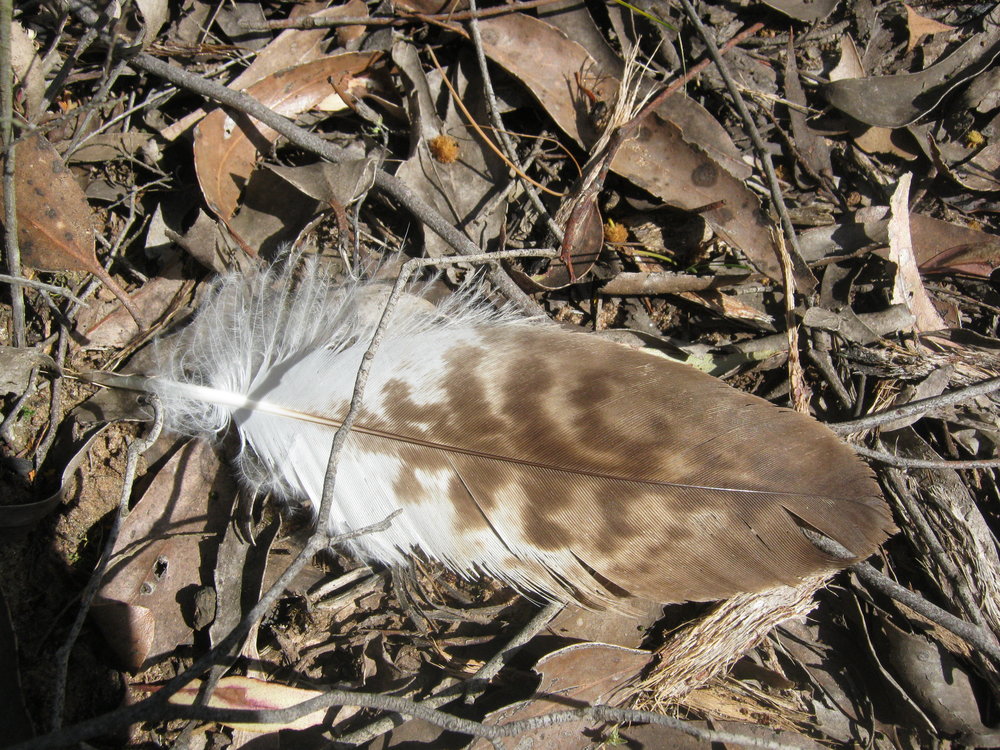
To me, the walk, and especially the seat, is a magical place, peaceful and full of life, with a wonderful view of hills and valleys, becoming paler in the distance. The horizon is fairly flat, with faint blue hilltops showing just above it in places. The only obvious signs of humanity are a pale gravel road winding down to a picnic ground, out of sight, and up again over a distant hill, sounds of faraway traffic on a busier road, and the seat. Perhaps you too have your own magical place to visit and enjoy nature.
Banner image is courtesy of Wendy Cook.

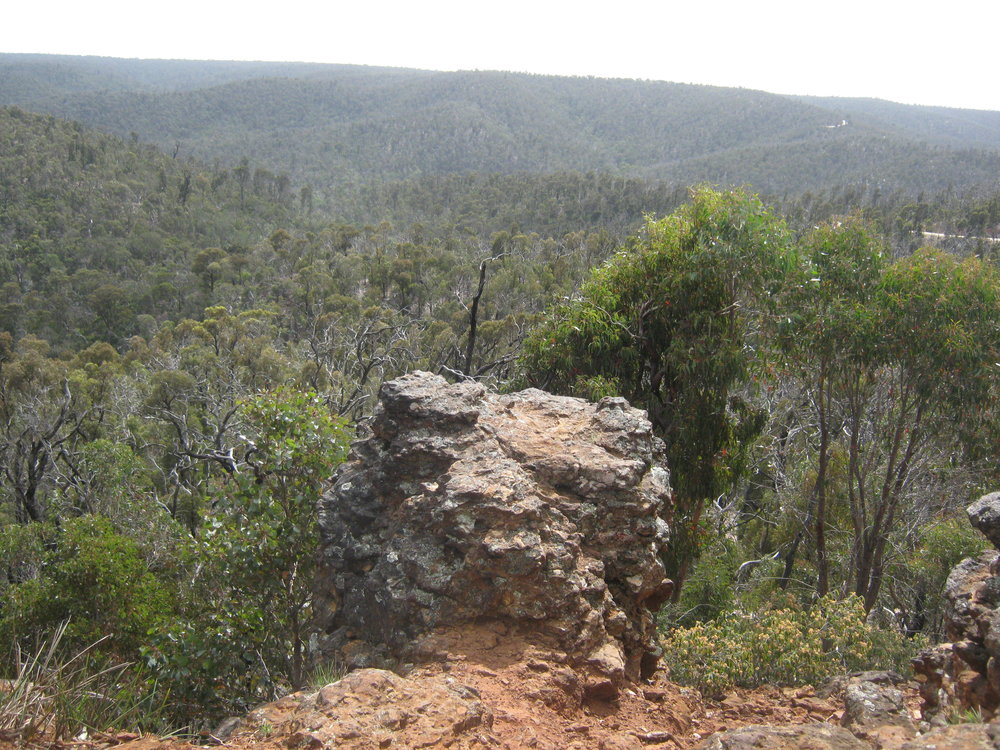
Leave a Reply